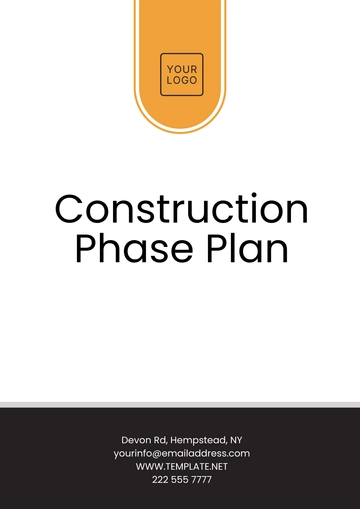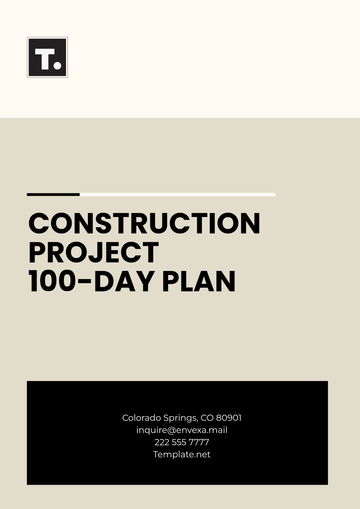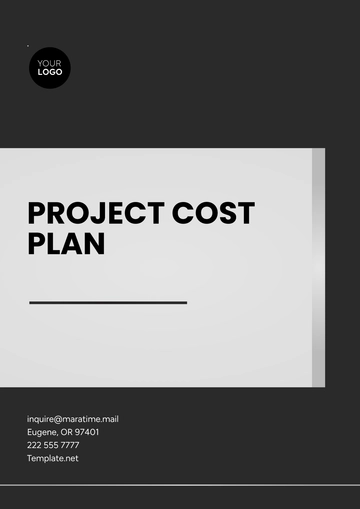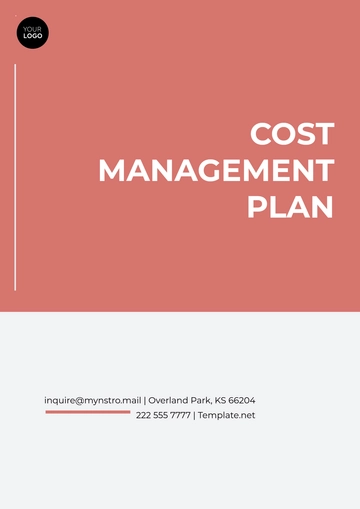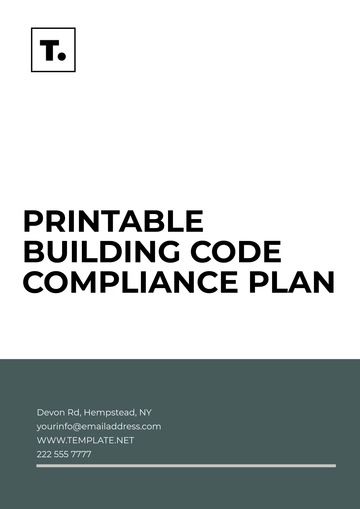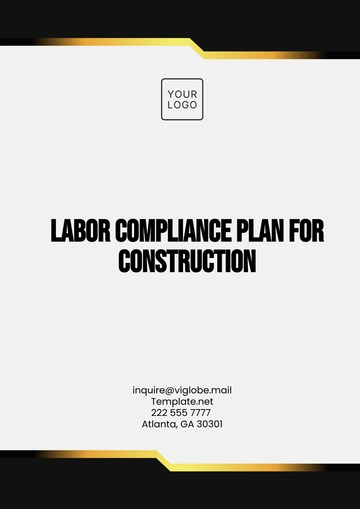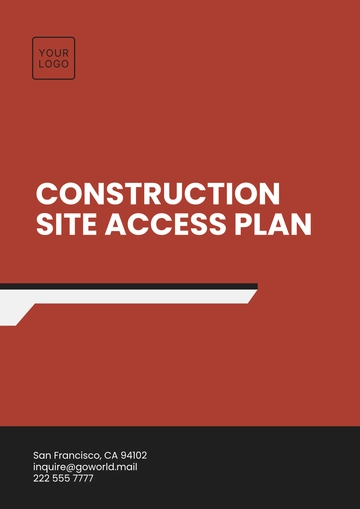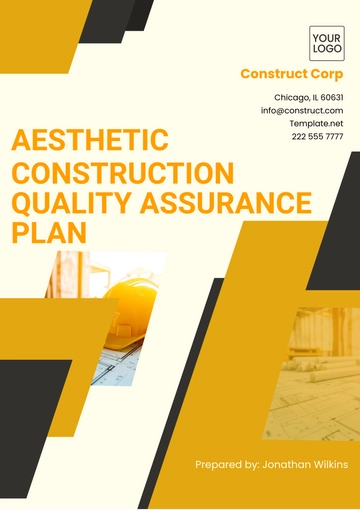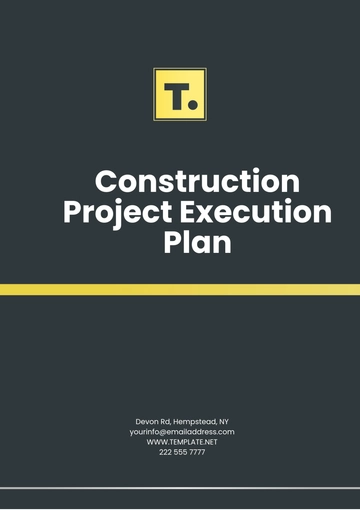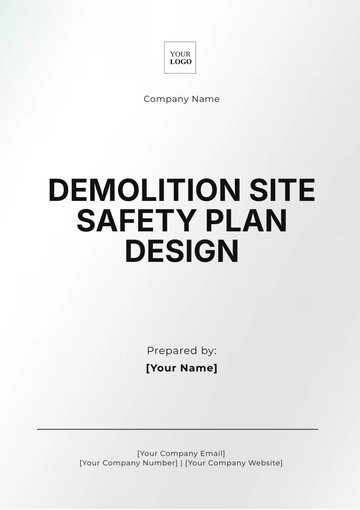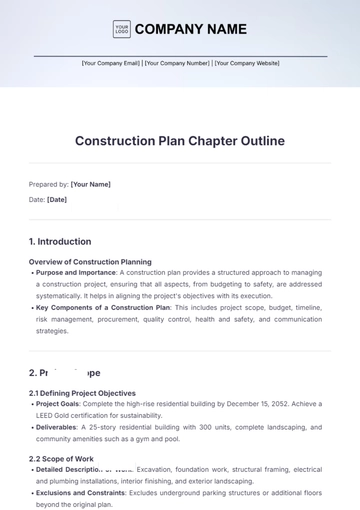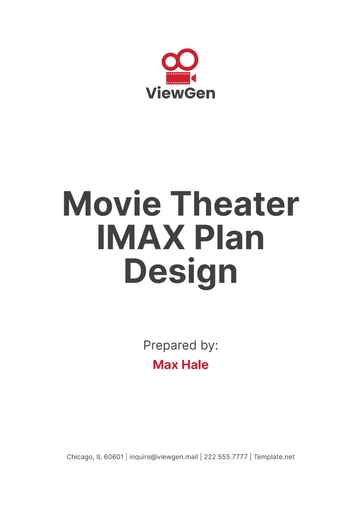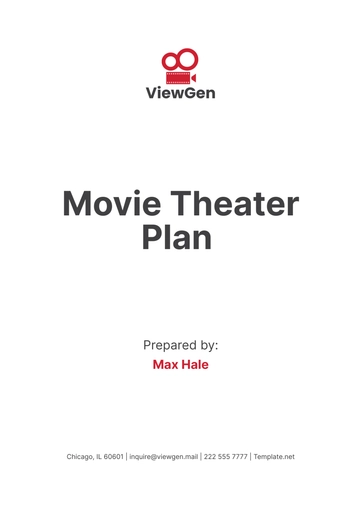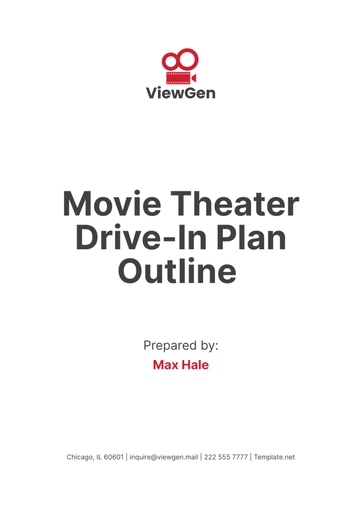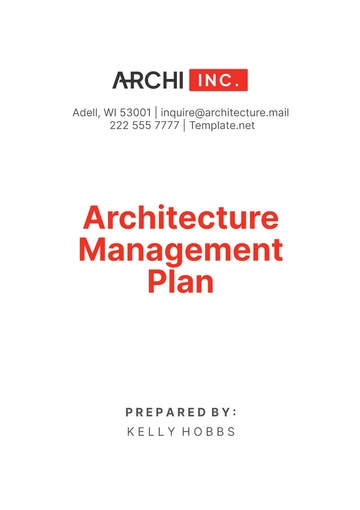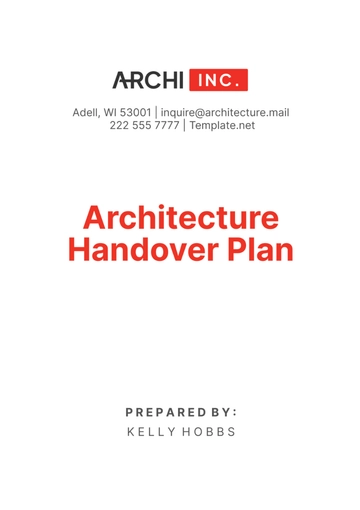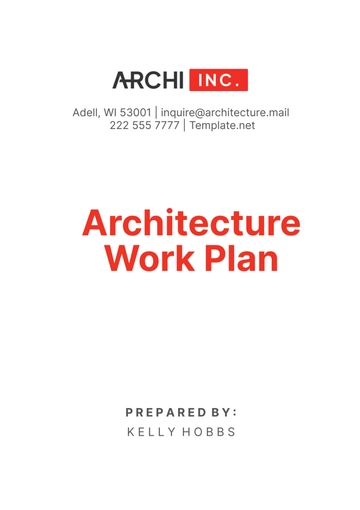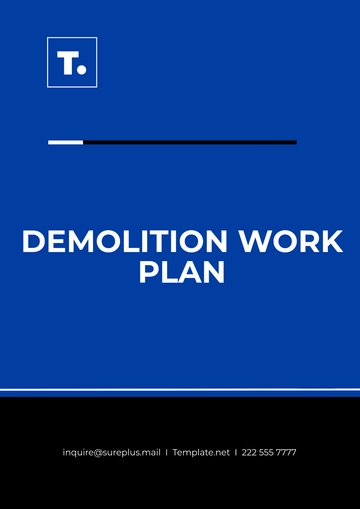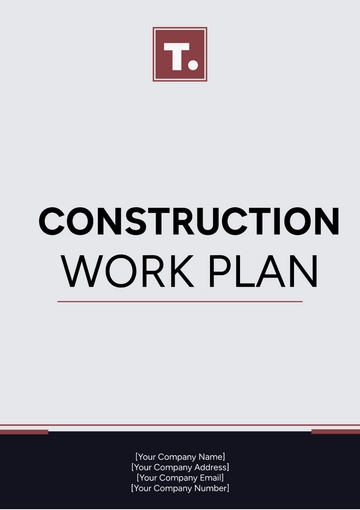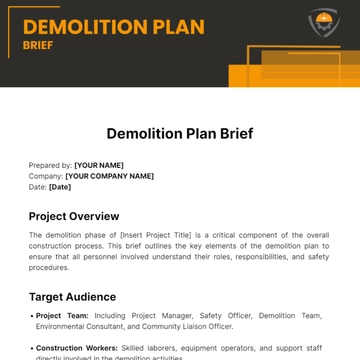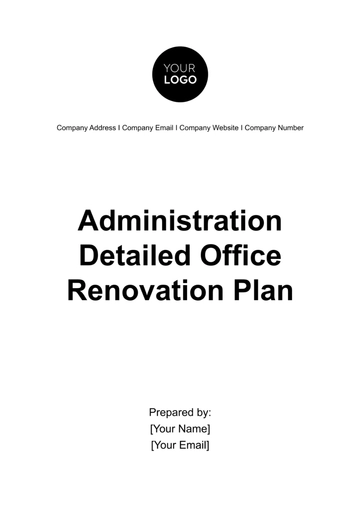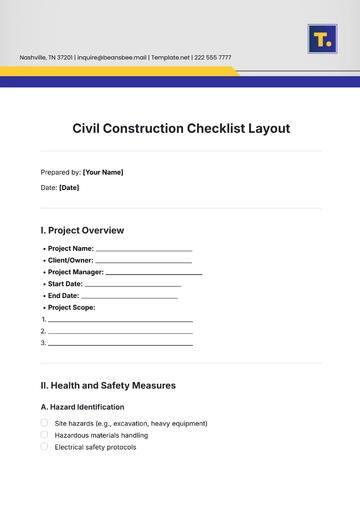Free Architecture Management Plan
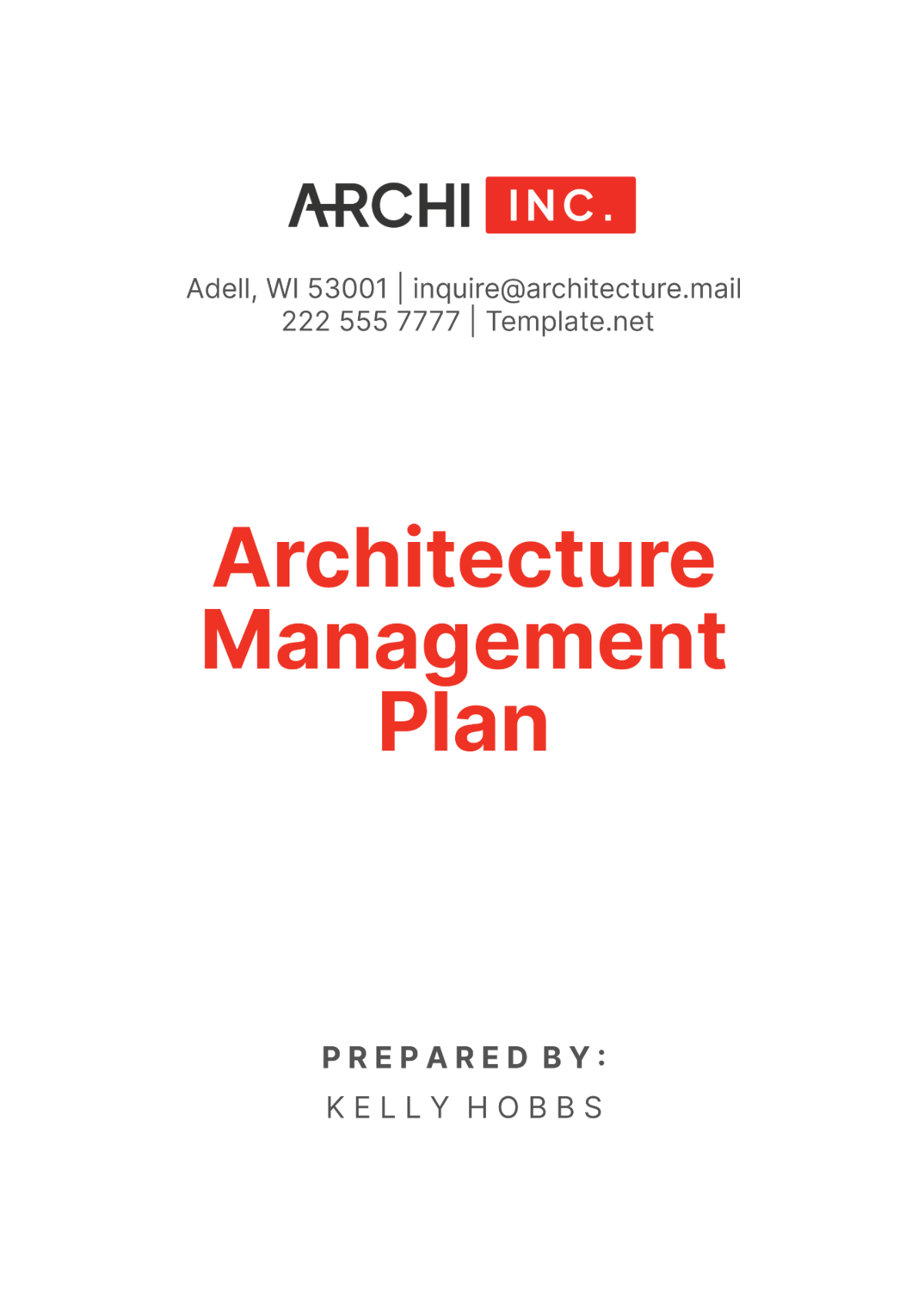
I. Introduction
The Architecture Management Plan (AMP) is a comprehensive guide designed to provide a structured approach to managing and overseeing architectural projects within [Your Company Name]. It outlines key roles, responsibilities, processes, and tools necessary for successful project completion. This plan is integral to ensuring that architectural designs meet both functional and aesthetic criteria while adhering to project constraints such as budget, timelines, and resources.
This document serves as a cornerstone for aligning the project team, stakeholders, and resources around a unified vision. It emphasizes the importance of maintaining high-quality standards, risk management, and continuous improvement throughout the project's lifecycle. Key stakeholders can refer to this AMP at any stage for guidance, updates, and status reports to ensure cohesive and efficient project management.
II. Objectives
This Architecture Management Plan (AMP) introduces our key objectives: establishing a consistent architectural vision, providing a structured approach for project planning and execution, and ensuring compliance with industry standards. These objectives aim to enhance project efficiency, quality, and stakeholder collaboration, ultimately strengthening [Your Company Name]'s reputation and driving growth in the industry.
Establish and maintain a clear and consistent architectural vision.
Provide a structured approach for project planning and execution.
Ensure compliance with industry standards and regulations.
Achieving these objectives will enable [Your Company Name] to deliver high-quality architectural projects that meet the expectations of all stakeholders. This approach will not only enhance customer satisfaction but also contribute to the company’s reputation and growth in the industry.
III. Roles and Responsibilities
To ensure the successful implementation of this AMP, the following roles and responsibilities are defined:
Role | Responsibilities |
|---|---|
Project Manager | Responsible for overall project coordination, resource allocation, risk management, and communication with stakeholders. |
Architect | Leads the architectural design process, ensuring compliance with design criteria, budget, and timelines. |
Quality Assurance Manager | Oversees quality control processes, conducts audits, and ensures that the project meets the required standards and specifications. |
Stakeholders | Provide input, feedback, and approval at various stages of the project to ensure alignment with business objectives and user needs. |
Each role is crucial in ensuring the project progresses smoothly from inception through to completion. Clear delineation of responsibilities helps to avoid overlap and ensures accountability at every stage.
IV. Methodology
This AMP follows a structured methodology divided into specific phases:
Initiation: Define the project scope, objectives, and stakeholders. Obtain necessary approvals and set up project governance.
Planning: Develop detailed project plans, including timelines, resource allocation, and risk management strategies. Outline the deliverables and milestones.
Execution: Implement the project plan, manage resources, and monitor progress against the established timelines. Ensure consistent communication among team members and stakeholders.
Monitoring and Control: Track project performance using key metrics. Identify, document, and manage risks and issues as they arise.
Closure: Complete final deliverables, obtain stakeholder approvals, and conduct post-project evaluation to capture lessons learned and best practices.
V. Tools and Techniques
To ensure the successful execution of architectural projects, a variety of tools and techniques will be utilized throughout the project lifecycle.
Project Management Software: Tools like Microsoft Project or Primavera for planning, scheduling, and tracking progress.
Design Software: Tools like AutoCAD or Revit for creating detailed architectural designs and visualizations.
Communication Tools: Platforms like Slack or Microsoft Teams for team collaboration and stakeholder communication.
Risk Management Tools: Techniques like SWOT analysis and risk matrices to identify, assess, and mitigate potential risks.
Effective use of these tools will enable the project team to manage complexities, enhance productivity, and ensure that the architectural projects are executed successfully, meeting both client and organizational expectations.
VI. Risk Management
Risk management is a critical component of this Architecture Management Plan (AMP). By proactively identifying, assessing, and addressing potential risks, [Your Company Name] ensures project stability and integrity throughout the project lifecycle. The following steps outline the risk management process:
1. Risk Identification
To identify potential risks, we will conduct brainstorming sessions with key team members and stakeholders. Additionally, we will consult historical data from previous projects to recognize recurring issues and anticipate new risks. This comprehensive approach ensures that all possible risks are considered at the outset of the project.
2. Risk Assessment
Once risks are identified, we will assess their likelihood and impact using both qualitative and quantitative methods. Qualitative assessment involves categorizing risks based on their severity and probability, while quantitative assessment involves numerical analysis to estimate the potential impact on project outcomes. This dual approach provides a thorough understanding of the risks we may face.
3. Risk Mitigation
For each identified risk, we will develop and implement strategies to reduce or eliminate its impact. Mitigation strategies may include:
Avoidance: Altering project plans to circumvent the risk entirely.
Reduction: Implementing measures to minimize the likelihood or impact of the risk.
Transfer: Shifting the risk to a third party, such as through insurance or outsourcing.
Acceptance: Acknowledging the risk and preparing to manage its impact if it occurs.
These strategies will be tailored to the specific nature and severity of each risk, ensuring effective mitigation.
4. Risk Monitoring
Throughout the project lifecycle, risks will be continuously monitored and reported. Regular risk reviews will be conducted to track the status of identified risks, assess the effectiveness of mitigation strategies, and identify any new risks that may arise. This ongoing monitoring enables the project team to respond swiftly to changing conditions and maintain control over the project.
Proactive risk management is essential for the successful execution of architectural projects. By anticipating and addressing potential issues before they escalate, [Your Company Name] can maintain project stability, meet client expectations, and uphold our commitment to delivering high-quality architectural solutions.
VII. Quality Assurance
Quality assurance is paramount in delivering a successful architectural project. The following processes will be employed to ensure high quality:
Quality Planning ↓ Quality Control ↓ Continuous Improvement |
|---|
1. Quality Planning
Define quality standards and criteria that align with industry best practices and client requirements.
Establish clear quality objectives for each project phase.
2. Quality Control
Conduct regular inspections and audits to ensure compliance with defined quality standards.
Utilize checklists and standardized procedures to maintain consistency.
Address any non-conformities promptly to prevent issues from escalating.
3. Continuous Improvement
Capture lessons learned from each project to identify areas for improvement.
Implement enhancements in subsequent projects to elevate overall quality.
Encourage feedback from clients and stakeholders to refine processes continuously.
Maintaining rigorous quality assurance standards will help [Your Company Name] deliver projects that not only meet but exceed stakeholder expectations. This commitment to quality will enhance client satisfaction and trust, ultimately contributing to the company’s reputation and success in the industry.
VIII. Communication Plan
Effective communication is crucial for project success. This component of the AMP outlines:
Communication Objectives: Ensure timely and clear communication among all stakeholders.
Communication Methods: Utilize tools such as email, project management software, and regular meetings to disseminate information.
Reporting Structure: Define the frequency and format of status reports and updates to keep stakeholders informed.
IX. Conclusion
This Architecture Management Plan serves as a comprehensive guide for managing architectural projects within [Your Company Name]. By following this structured approach, all project participants can effectively collaborate to deliver projects that are on time, within budget, and of the highest quality. The plan emphasizes the importance of clear communication, risk management, and quality assurance to achieve project success.
The implementation of this AMP reflects [Your Company Name]’s commitment to excellence and continuous improvement, ensuring that it remains a leader in the architectural industry. By adhering to this plan, the company can consistently meet the demands of stakeholders and maintain its competitive edge.
- 100% Customizable, free editor
- Access 1 Million+ Templates, photo’s & graphics
- Download or share as a template
- Click and replace photos, graphics, text, backgrounds
- Resize, crop, AI write & more
- Access advanced editor
Ensure effective project management with the Architecture Management Plan Template from Template.net. This editable and customizable document simplifies creating comprehensive management plans for architectural projects. Tailored for the industry, it ensures clarity and professionalism in outlining project goals, timelines, resources, and communication protocols. Editable in our Ai Editor Tool for seamless customization to meet your specific management plan needs.
You may also like
- Finance Plan
- Construction Plan
- Sales Plan
- Development Plan
- Career Plan
- Budget Plan
- HR Plan
- Education Plan
- Transition Plan
- Work Plan
- Training Plan
- Communication Plan
- Operation Plan
- Health And Safety Plan
- Strategy Plan
- Professional Development Plan
- Advertising Plan
- Risk Management Plan
- Restaurant Plan
- School Plan
- Nursing Home Patient Care Plan
- Nursing Care Plan
- Plan Event
- Startup Plan
- Social Media Plan
- Staffing Plan
- Annual Plan
- Content Plan
- Payment Plan
- Implementation Plan
- Hotel Plan
- Workout Plan
- Accounting Plan
- Campaign Plan
- Essay Plan
- 30 60 90 Day Plan
- Research Plan
- Recruitment Plan
- 90 Day Plan
- Quarterly Plan
- Emergency Plan
- 5 Year Plan
- Gym Plan
- Personal Plan
- IT and Software Plan
- Treatment Plan
- Real Estate Plan
- Law Firm Plan
- Healthcare Plan
- Improvement Plan
- Media Plan
- 5 Year Business Plan
- Learning Plan
- Marketing Campaign Plan
- Travel Agency Plan
- Cleaning Services Plan
- Interior Design Plan
- Performance Plan
- PR Plan
- Birth Plan
- Life Plan
- SEO Plan
- Disaster Recovery Plan
- Continuity Plan
- Launch Plan
- Legal Plan
- Behavior Plan
- Performance Improvement Plan
- Salon Plan
- Security Plan
- Security Management Plan
- Employee Development Plan
- Quality Plan
- Service Improvement Plan
- Growth Plan
- Incident Response Plan
- Basketball Plan
- Emergency Action Plan
- Product Launch Plan
- Spa Plan
- Employee Training Plan
- Data Analysis Plan
- Employee Action Plan
- Territory Plan
- Audit Plan
- Classroom Plan
- Activity Plan
- Parenting Plan
- Care Plan
- Project Execution Plan
- Exercise Plan
- Internship Plan
- Software Development Plan
- Continuous Improvement Plan
- Leave Plan
- 90 Day Sales Plan
- Advertising Agency Plan
- Employee Transition Plan
- Smart Action Plan
- Workplace Safety Plan
- Behavior Change Plan
- Contingency Plan
- Continuity of Operations Plan
- Health Plan
- Quality Control Plan
- Self Plan
- Sports Development Plan
- Change Management Plan
- Ecommerce Plan
- Personal Financial Plan
- Process Improvement Plan
- 30-60-90 Day Sales Plan
- Crisis Management Plan
- Engagement Plan
- Execution Plan
- Pandemic Plan
- Quality Assurance Plan
- Service Continuity Plan
- Agile Project Plan
- Fundraising Plan
- Job Transition Plan
- Asset Maintenance Plan
- Maintenance Plan
- Software Test Plan
- Staff Training and Development Plan
- 3 Year Plan
- Brand Activation Plan
- Release Plan
- Resource Plan
- Risk Mitigation Plan
- Teacher Plan
- 30 60 90 Day Plan for New Manager
- Food Safety Plan
- Food Truck Plan
- Hiring Plan
- Quality Management Plan
- Wellness Plan
- Behavior Intervention Plan
- Bonus Plan
- Investment Plan
- Maternity Leave Plan
- Pandemic Response Plan
- Succession Planning
- Coaching Plan
- Configuration Management Plan
- Remote Work Plan
- Self Care Plan
- Teaching Plan
- 100-Day Plan
- HACCP Plan
- Student Plan
- Sustainability Plan
- 30 60 90 Day Plan for Interview
- Access Plan
- Site Specific Safety Plan
